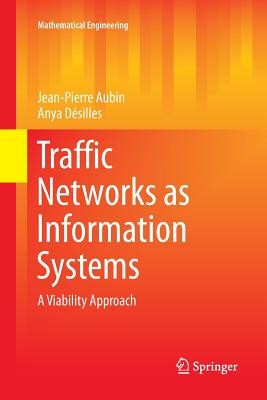
- We will send in 10–14 business days.
- Author: Jean-Pierre Aubin
- Publisher: Springer
- ISBN-10: 3662568691
- ISBN-13: 9783662568699
- Format: 15.6 x 23.4 x 1.4 cm, minkšti viršeliai
- Language: English
- SAVE -10% with code: EXTRA
Reviews
Description
This authored monograph covers a viability to approach to traffic management by advising to vehicles circulated on the network the velocity they should follow for satisfying global traffic conditions;. It presents an investigation of three structural innovations:
The objective is to broadcast at each instant and at each position the advised celerity to vehicles, which could be read by auxiliary speedometers or used by cruise control devices.
Namely,
1. Construct regulation feedback providing at each time and position advised velocities (celerities) for minimizing congestion or other requirements.
2. Taking into account traffic constraints of different type, the first one being to remain on the roads, to stop at junctions, etc.
3. Use information provided by the probe vehicles equipped with GPS to the traffic regulator;
4. Use other global traffic measures of vehicles provided by different types of sensors;
These results are based on convex analysis, intertemporal optimization and viability theory as mathematical tools as well as viability algorithms on the computing side, instead of conventional techniques such as partial differential equations and their resolution by finite difference or finite elements algorithms. The target audience primarily covers researchers and mathematically oriented engineers but the book may also be beneficial for graduate students.
EXTRA 10 % discount with code: EXTRA
The promotion ends in 23d.18:20:30
The discount code is valid when purchasing from 10 €. Discounts do not stack.
- Author: Jean-Pierre Aubin
- Publisher: Springer
- ISBN-10: 3662568691
- ISBN-13: 9783662568699
- Format: 15.6 x 23.4 x 1.4 cm, minkšti viršeliai
- Language: English English
This authored monograph covers a viability to approach to traffic management by advising to vehicles circulated on the network the velocity they should follow for satisfying global traffic conditions;. It presents an investigation of three structural innovations:
The objective is to broadcast at each instant and at each position the advised celerity to vehicles, which could be read by auxiliary speedometers or used by cruise control devices.
Namely,
1. Construct regulation feedback providing at each time and position advised velocities (celerities) for minimizing congestion or other requirements.
2. Taking into account traffic constraints of different type, the first one being to remain on the roads, to stop at junctions, etc.
3. Use information provided by the probe vehicles equipped with GPS to the traffic regulator;
4. Use other global traffic measures of vehicles provided by different types of sensors;
These results are based on convex analysis, intertemporal optimization and viability theory as mathematical tools as well as viability algorithms on the computing side, instead of conventional techniques such as partial differential equations and their resolution by finite difference or finite elements algorithms. The target audience primarily covers researchers and mathematically oriented engineers but the book may also be beneficial for graduate students.


Reviews